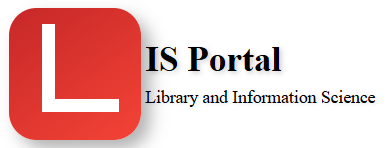Generations of Computers
-
First Generation (1940-1956): The first generation of computers used vacuum tubes for electronic components and magnetic drums for data storage. These computers were massive and expensive, and were primarily used for scientific calculations and military applications. Some examples of first-generation computers include the ENIAC and UNIVAC.
-
Second Generation (1956-1963): The second generation of computers used transistors instead of vacuum tubes, which made them smaller, faster, and more reliable. These computers were also more affordable than their predecessors and were used for business and scientific applications. Examples of second-generation computers include the IBM 7090 and the UNIVAC 1107.
-
Third Generation (1964-1971): The third generation of computers used integrated circuits (ICs) instead of individual transistors, which made them even smaller, faster, and more powerful. These computers could also multitask and run multiple programs at once. Examples of third-generation computers include the IBM System/360 and the DEC PDP-8.
-
Fourth Generation (1971-1989): The fourth generation of computers used microprocessors instead of separate ICs, which made them even smaller and more powerful. These computers were also more affordable and were used for personal computing, business applications, and gaming. Examples of fourth-generation computers include the Apple II, the IBM PC, and the Commodore 64.
-
Fifth Generation (1989-Present): The fifth generation of computers is characterized by the development of artificial intelligence (AI) and natural language processing (NLP) technologies. These computers can perform complex tasks such as voice recognition, image processing, and language translation. Examples of fifth-generation computers include supercomputers like the IBM Watson, and modern consumer devices like smartphones, tablets, and smart home assistants.
It’s worth noting that the dates for the generations of computers are approximate, and the evolution of computing technology is a continuous process that is still ongoing.
Computers can be classified based on different criteria, including their purpose, size, processing power, and architecture. Here are some common ways to classify computers:
Based on Purpose:
a. Personal computers: Used for personal and business tasks, like browsing the web, word processing, and managing spreadsheets.
b. Workstations: High-performance computers used for scientific and technical applications, like CAD (computer-aided design), 3D modeling, and video editing.
c. Servers: Used to store and manage data and provide services, like hosting websites, emails, and databases.
d. Supercomputers: Used for high-performance computing and scientific applications, like weather forecasting, simulations, and data analytics.
Based on Size:
a. Desktop computers: Designed to sit on a desk and usually consist of a separate display, keyboard, and mouse.
b. Laptop computers: Portable computers that are designed to be used on-the-go.
c. Tablet computers: Portable devices with a touchscreen interface that can be used for browsing, watching videos, and playing games.
d. Smartphones: Mobile devices that can make calls, send text messages, and connect to the internet.
Based on Processing Power:
a. Mainframe computers: High-performance computers that are designed to process large amounts of data and support multiple users simultaneously.
b. Mini computers: Mid-range computers that are smaller and less powerful than mainframes but more powerful than personal computers.
c. Microcomputers: Low-cost, small-sized computers that are suitable for individual use.
Based on Architecture:
a. RISC (Reduced Instruction Set Computing) computers: Have a simple instruction set, which allows them to process instructions faster than CISC (Complex Instruction Set Computing) computers.
b. CISC computers: Have a more complex instruction set, which allows them to perform more complex operations, but at a slower speed.
c. Hybrid computers: Combine the features of both analog and digital computers.
Based on Operating System:
a. Windows computers: Computers that run on the Windows operating system developed by Microsoft.
b. Mac computers: Computers that run on the macOS operating system developed by Apple.
c. Linux computers: Computers that run on the Linux operating system, which is open-source and free.
Based on Connectivity:
a. Standalone computers: Computers that are not connected to any network or other devices.
b. Networked computers: Computers that are connected to a network, which allows them to share resources and communicate with other devices.
Based on Input/Output Devices:
a. Traditional computers: Computers that use a keyboard and mouse for input and a display for output.
b. Touchscreen computers: Computers that use a touchscreen display for input and output.
c. Voice-activated computers: Computers that use voice commands for input and output.
Based on Form Factor:
a. Tower computers: Large-sized desktop computers that typically have multiple expansion slots and drive bays.
b. All-in-one computers: Desktop computers that have a built-in display and all the components are housed in a single unit.
c. Mini PCs: Small-sized desktop computers that are designed for space-saving and energy efficiency.
